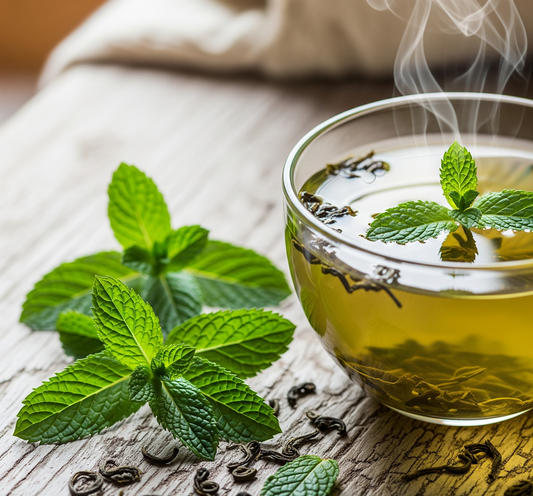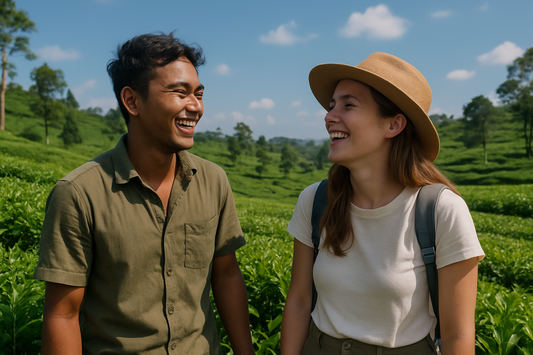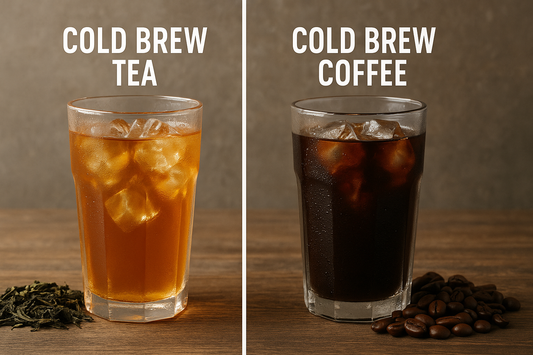Green teas in comparison to black teas go through minimal handling. The leaves are fresh off the plant itself and only go through a flavor enhancing non-invasive processing. Due to Nepal Tea's fail-proof packaging, our green teas are still rich in its natural antioxidants and polyphenols by the time it reaches your home.
Drinking green tea and its health benefits on our body have been the talk of the town for quite a while now. Several researches and studies to this amazing brew has resulted in a cultural shift consequently resulting in green tea being synonymous to weight loss, lowering high blood pressure, beneficial to heart and brain, and even Alzheimer's disease. And although more research are being conducted world-wide and we’re no medical experts, as tea people we do agree that there are a lot of positive effects to adding green tea into one's diet for regular consumption.
Before we dive deep into the scientific bits of tea making, we must dive into the history of green tea itself.
History: Chinese Green tea
The cultivation of green tea can be traced as far back as the Han Dynasty (206-220). The primary use of the brew given all its health benefits were medicinal. People used green tea to control bleeding and heal wounds, aid digestion, improve heart and mental health, and regulate body temperature.
Present day: Green tea harvesting and consumption
Although the origin and the cultural development is credited to China's ancient history, a new kind of history is being spun right now. As India and Nepal are experimenting in their native regions to extract rich flavors, there are more varieties of green teas than ever.
So how are green teas made?
This blog will give you an insight on why tea deriving from the same camellia sinensis plant that black tea comes from has so many more possible benefits .

The tea farmers, carefully monitoring the plant growth, will hand pick the tea terminal bud and the first one or two leaves below the bud are plucked. Nepal Tea green teas are harvested in the spring or early summer just before the charged summer season brings out quick overall growth in the tea gardens.
Plucking
Good green teas are usually the very first leaves from the tea bush. These leaves are the first growth in stems that have been dormant all winter. Tea farmers carefully pluck out the right buds with practiced technique.

Drying
After the tea leaves are plucked, they must be dried immediately to prevent oxidation. In China, green teas are often pan-fired in very large woks, over a flame or using an electric wok. In Japan they use wet heat of comparatively low temperature. They’re typically done through steam close to 100° C and are applied for a quick blast for a few minutes.

In the factory where Nepal Tea's collection is prepared, the fresh plucked tea leaves are dried in a commercial dryer. This process stops the oxidation process completely and also locks in the aromatics developed during the process.
Rolling
Green teas are often lightly rolled to break open the cells and coat the exterior of the leaf with the essential oils that give green tea its strength and vegetal flavor. For Nepali tea, leaves are rolled into smaller rolling tables or machines allowing a more precise and gentle rolling.

Green teas in comparison to black teas go through minimal handling. The leaves are fresh off the plant itself and only go through a flavor enhancing non-invasive processing. Due to Nepal Tea's fail-proof packaging, our green teas are still rich in its natural antioxidants and polyphenols by the time it reaches your home.

The popularity of green tea, in our opinion, is well-deserved. All the research and personal experiences of regular green tea consumers conclude that the brew is a motherlode of health benefits. Recent market upsurge on Matcha has got even the young non-tea consumers hooked and we’re super glad to see an entire culture shift with so many creative uses and recipes for green teas.
If this blog has convinced you to try your hand at green teas, do start from our green tea collection.




